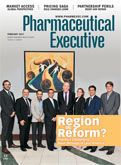Country Report: Singapore
Despite serving as a regional hub for numerous leading global healthcare and life sciences companies-while simultaneously straddling the frontier of biomedical advancement and innovation-Singapore is reinventing itself yet again and spearheading a new model of Asian healthcare.
This sponsored supplement was produced by Focus Reports
Project Directors: Jun Wakabayashi, Alexander Ackerman
Project Coordinators: Lisa Diericks, Roxane Höck
Project Assistants: Luis Sancho, Frances Doria
Graphic Assistance: Miriam Léon
Project Publisher: Mariuca Georgescu
Senior Editor: Louis Haynes
Editor: Patrick Burton
For exclusive interviews and more info, please log onto www.pharmaboardroom.com or write to contact@focusreports.net
The Heart of Asia Pacific
The narrative of Singapore's economic miracle will be all too familiar to many readers: a country that was never meant to be, transforming itself from a sleepy fisherman's hollow into a thriving metropolis that is now among the richest nations in the world in terms of GDP per capita. With limited land and natural resources, this island city-state has managed to carve out its own unique value proposition over the last 50 years as a leading global hub of trade, and a facilitator of access for companies looking to unlock Asia's untapped potential; "Singapore remains an extraordinarily logical place to lead operations for either Southeast Asia or Asia Pacific: it's quite frankly an easy sell to corporate boards, risk management teams, and families seeking to relocate," quips A.T. Kearney's head of health practice for Asia Pacific Keith Lostaglio.

Time and time again, Singapore has exceeded expectations and managed to stay relevant despite its relatively minuscule size. Currently serving as a regional hub for a horde of leading international healthcare and life sciences companies, while simultaneously straddling the frontier of scientific advancement and innovation, Singapore's position as the "Biopolis of Asia" is seemingly uncontested.
Yet, the most pressing question remains, how many times can one country reinvent itself before plateauing?
THE BEST IS YET TO COME
The harsh reality is that a lot of countries within the region are now catching up and developing their economies," conveys Dr. Teoh Yee Leong, CEO of the Singapore Clinical Research Institute (SCRI). "In order for us to truly maintain our lead positioning, we have to be highly conscious of our limitations and continuously invest in our human, intellectual, and industrial capital, while forging networks with highly populated countries in Asia and mounting the forefront of scientific and clinical research within the region," stresses Teoh. Under the sixth iteration of the science and technology plan, Prime Minister Lee Hsien Loong recently unveiled the RIE2020 Plan, which entails a government commitment of SGD 19 (USD 14) billion over the period 2016 to 2020 to research, innovation and enterprise, with at least 21 percent of that funding dedicated to taking Singapore's biomedical sciences sector through its next stage of development. As it currently stands, according to Singapore's Economic Development Board (EDB)-the lead government agency in charge of attracting multinational interests and responsible for much of the country's success to date-the biomedical sciences sector now employs over 15,000 people and contributes 3.5 to 4 percent of the nation's GDP, amounting to roughly USD 19 billion and firmly cementing it as Singapore's 4th economic pillar, alongside chemicals, engineering, and electronics.
"Singapore has done well to date, but now the question is how do we remain competitive and evolve alongside the industry's own development? Healthcare models are shifting, particularly with aging populations and increasingly pervasive chronic diseases. For us in Singapore then, it's about creating the right environment so that companies can adopt and pivot to a new healthcare model," indicates EDB's director of biomedical sciences Ho Weng Si.
The Next Lap: Biosciences in Singapore 2025

In line with the agency's latest strategic framework - Attract, Transform, and Create (ATC) - pivoting to a new healthcare model is not only about attracting and applying the latest technologies to improve standards of care, but also strives to incorporate the participation of non-conventional players. "In the future, healthcare solutions might not only be delivered by just incumbent healthcare players... we may start seeing the surge of more companies from IT or insurance for example, entering the mix, alongside traditional pharma, medtech, and nutrition companies to meet modern day healthcare challenges," predicts Ho.
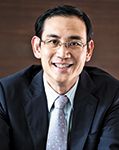
Dr. Benjamin Seet, executive director, A*STAR BMRC
This notion of convergence and integration of industries has been one of the primary themes driving the nation's R&D efforts. "In the past, approximately 75 percent of our engagements were attributed to pharma and biotech," recounts Dr. Benjamin Seet, executive director of A*STAR's Biomedical Research Council. A*STAR, the chief government body tasked with coordinating the nation's research and development initiatives, has experienced a material change in its research portfolio over the last 5 years, with that 75 percent now becoming 25 percent. Seet explains this structural change had two purposes, one being to respond to emerging opportunities, and second to diversify into adjacent sectors such as medical technologies, food and nutrition, and personal care. "I believe we have to reinvent ourselves every five years. Looking at how to be relevant is a continuous process that requires looking for and anticipating signals of change that will drive how consumers behave," proclaims Seet.
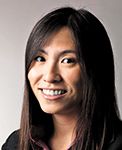
Ho Weng Si, director of biomedical sciences, EDB
Meanwhile, the founder and CEO of ASLAN Pharmaceuticals Dr. Carl Firth argues that Singapore must eventually grow out of its reliance on international capital. "Decision makers have long recognized that any subsequent value created from good science actually leaves Singapore when partnering with overseas companies," exclaims Firth, going on further to suggest that the ability to build truly innovative homegrown companies is the next critical step in driving Singapore's future value proposition.
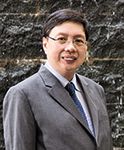
Dr. Teoh Yee Leong, CEO, Singapore Clinical Research Institute
The chairwoman of BioSingapore Dr. Ong Siew Hwa, however, provides a word of caution: "It is worth mentioning that Singapore, especially given its relatively young age, does not possess the same level of experience, depth of knowledge, or critical mass in biotechnology that other territories such as the US or Europe might have. This may increase the difficulties in dealing with MNCs or financial institutions in order to obtain investment."
Aging in Asia & Economic Disparity
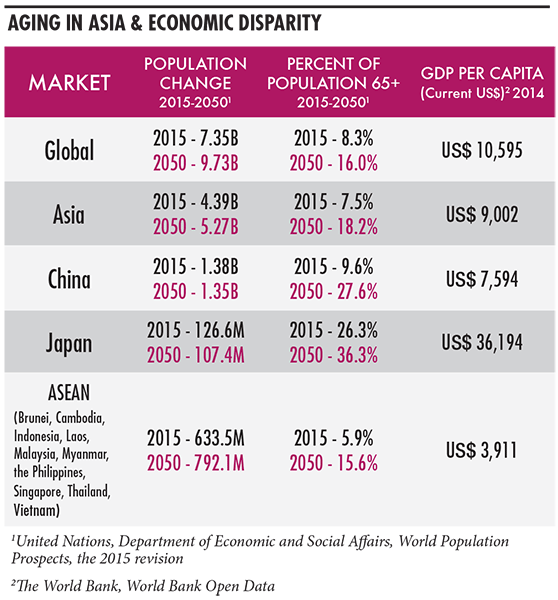
Anand Tharmaratnam, QuintilesIMS's president for Asia Pacific, contends that for Singapore to successfully commercialize homegrown innovations, "there are some skills and competencies that will need to be developed to get there. Singapore's capabilities are quite robust in basic research, but the capacities needed to translate research into something of commercial value are still developing." He further details that, "Singapore will have to import talent for guiding products and companies from the clinic into the early commercial phase... Steps must also be taken to ensure that there is sufficient capital available as the startup ecosystem starts to mature."
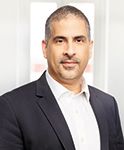
Carl Firth, CEO, ASLAN Pharmaceuticals
Nevertheless, whether it's an inward or outward focus, A*STAR's Dr. Benjamin Seet remains resolute in the country's ambitions: "Going ahead, we will focus our efforts on identifying the disruptors and trend setters for each of these industry sectors, determine what we can do that's differentiated, and then invest deeply to build a level of expertise that's competitive on a global scale."
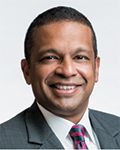
Anand Tharmaratnam, president Asia Pacific, QuintilesIMS
SPEARHEADING A NEW MODEL OF ASIAN HEALTHCARE
One area where Singapore can still assume a technological and thought leadership position is in its responsiveness to the myriad of issues afflicting the Southeast Asian and Asia Pacific healthcare and life sciences space. "With roughly half of the world's population here in Asia Pacific, we see an increase in unmet medical needs, which will continue to grow with aging populations and the surge of chronic diseases," says Gary Pruden, worldwide chairman of medical devices at Johnson & Johnson. Indeed, demand for healthcare in Asia is massive and rising quickly; Johnson & Johnson Medical Devices' company group chairman for Asia Pacific Vladimir Makatsaria – who also serves as chairman of APACMed – explains "we spend more than eight times as much on healthcare for people who are older than 65, and in Asia Pacific alone we have 320 million people that are aged 65 and over, a number that is set to double over the next few years."
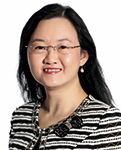
Dr. Ong Siew Hwa, Chairwoman, BioSingapore
While many see the scale of these unserved or underserved patient populations as little more than a sizeable and sustained growth opportunity, the truth is that healthcare systems across the region are in no-way prepared to meet the incredible scale of new demand for healthcare. Makatsaria contends that, "supply as currently configured will not be able to keep up. It will take hundreds of years for doctor-patient ratios in Asia to draw level with those in countries with the most advanced healthcare systems. By 2020, the region will experience a shortage of approximately two million healthcare practitioners."

Gary Pruden, worldwide chairman Medical Devices, Johnson & Johnson
For pharma and medical device companies, there are significant market access issues making it difficult to reach these large patient populations. As Kris Sterkens, company group chairman Asia Pacific for Janssen, points out, "Many of the governments in this region don't have the budgets to accommodate the substantial premiums associated with some of the newer treatments for cancer, for example. Similarly, within metabolic diseases, the number of diabetic patients in India is 90 million, and that number increases to 150 million when we add China, which is more than the rest of the world combined by far. Governments are well aware of how difficult it is to enable widespread access to medicines for all of these patients, placing more of a moral obligation on the industry to explore different options that will help more patients."
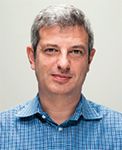
Vladimir Makatsaria, company group chairman Asia Pacific, Johnson & Johnson Medical Devices
Moreover, medical practices in many countries still lag significantly behind best practices, in many cases leading to inefficient use of limited resources. Pruden argues that, "Medtech across the region is underpenetrated in many categories," highlighting that "MIS (minimally invasive surgery) has a penetration rate of roughly 34 percent globally – which is significantly lower in emerging markets. Patients are often staying at a hospital for an extended period of time instead of going home in one day." As such, J&J sees "a lot of opportunity in partnering with governments in the region to increase training, education, and access to new technology to ultimately reach more patients and restore more lives in Asia Pacific as a whole."
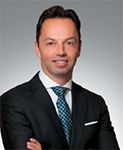
Kris Sterkens, company group chairman Asia Pacific, Janssen
However, what is clear is that driving the adoption of innovation in terms of products and therapies can only do so much to help address the huge imbalance between supply and demand of healthcare in the biggest markets in Asia Pacific. Keith Lostaglio, partner and head of A.T. Kearney's health practice in Asia Pacific illustrates the issue, explaining that for countries "like Thailand or Indonesia with the logistical challenges of reaching all 16,000 islands, developing and implementing rational, relatively efficient systems and broadening coverage beyond major cities will require the use of new technologies, new ways of thinking and creative solutions. There is absolutely no way a multinational life science company can reach and communicate with physicians, pharmacists, and patients across more difficult to access portions of the region without an effective digital platform in place." Meanwhile, Makatsaria argues that, "the first priority must be innovation - not just product innovation, but process, procedure, and organizational innovation such that we can deliver better clinical value to patients at a lower overall economic cost."

Keith Lostaglio, partner & head of health practice Asia Pacific, A.T. Kearney
The challenge is that the usual innovators from the multinational life science industry are not well suited towards this task, or rather their innovative goals are not necessarily well aligned with the challenges that patients and healthcare practitioners in Asia most need innovative solutions for. Hideo Arase, director and senior executive officer of Terumo Corporation and managing director of Terumo Asia Holdings, explains that "the Western mentality and fruitful demand for high-end value and features simply does not align in developing countries, particularly here in Asia, where many places are struggling to even meet basic medical needs, let alone elicit funds for premium products." Similarly, Medtronic's president for Asia Pacific Bob White admits that a common "misconception is taking a Western product and transplanting it in a market in Asia Pacific and expecting it to simply work... The way that technology plays itself out in each market is also very different, and it's crucial that people appreciate these regional complexities before diving into the nuances."
A Prescription for Performance

Zimmer Biomet's senior executive advisor for Asia Pacific Stephen Ooi is a big believer in what he calls 'frugal innovation.' "Emerging markets innovate because they have urgent needs for solutions. Some emerging market innovations need to be more focused on gaining value rather than creating high prices. This 'frugal innovation' can have an enormous impact." He also critiques his peers, saying that "Western companies sometimes use what I believe is an incorrect approach when they take existing innovations and just reduce the number of features. Instead they should be addressing the specific concerns of the populations that need the product and build the product around these needs. Innovation needs a ground-up approach." It is in this context that Zimmer Biomet is "doing a lot more in bringing designers and engineers from the Western world to see what is happening here in Asia Pacific and they are truly amazed by the developments in this region," enthuses Ooi.
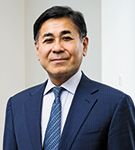
Hideo Arase, director & senior executive officer, Terumo Corporation & managing director, Terumo Asia Holdings
With need necessitating innovation in healthcare models across Asia, it is clear that Singapore has an important role to play supporting the development of healthcare systems in other countries, particularly the nearby members of ASEAN. A.T. Kearney's Lostaglio argues "Singapore and the life science ecosystem here should take the lead in developing broad health enablement across the region, which in part will mean strengthening Singapore's role as a hub for R&D and innovation." J&J's Makatsaria elaborates on Singapore's suitability for this role, explaining that when Singapore's innovative healthcare system and medical talent are "coupled with Singapore's medical education capabilities and connectivity with the rest of the region, this translates into Singapore being a very important hub for training of doctors and surgeons from across the Asia Pacific region."
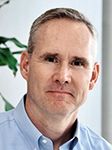
Bob White, president Asia Pacific, Medtronic
Evidently the one takeaway for multinationals with global innovation platforms is that healthcare needs can only be met at a local level, and in turn, a personal level, according to Jean-Luc Butel, president of K8 Global and senior advisor to McKinsey. "Many companies certainly see Asia as a market, as with the US or Europe, but do they perceive Asia as a lever that will effectively define their future 10 years down the road?" he ponders. "Asia is a huge continent and, as a result of many factors such as the vast aging population and a huge emerging middle class entering and demanding healthcare, it is going to play an important role in determining the healthcare model of tomorrow. The sooner healthcare executives come to terms with that, the sooner their companies will perform better regionally and globally," concludes Butel.
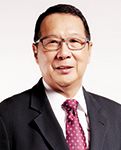
Stephen Ooi, senior executive advisor Asia Pacific, Zimmer Biomet
A BEACON OF LIGHT
Since 2000, the government's Biomedical Sciences (BMS) Initiative has set out to establish a self-sustaining biomedical ecosystem of end-to-end capabilities in research, development, and manufacturing-effectively enabling Singapore to transcend the technology curve into a truly knowledge and innovation-intensive economy. Following an orthodox export-oriented industrialization strategy, Singapore started on the road towards this ambitious goal by attracting FDI based manufacturing and R&D investments. This strategy has yielded much fruit, and today this 'little red dot' now serves a myriad of roles for healthcare and life science enterprises.

Jean-Luc Butel, president, K8 Global
The president of the Singaporean Association of Pharmaceutical Industries (SAPI) How Ti Hwei believes the country's refined network of infrastructure and the fact that 6 out of the top 10 selling drugs are now being produced in Singapore only yields positive signs for the manufacturing sector. "This gives confidence to the industry that not only can we maintain sustainable operations, but also keep up our pace of growth," proclaims How. Furthermore, "from an R&D point of view, we have many highly trained scientists and clinicians that work with pharmaceutical companies to keep pushing the boundaries of science. This open mindset is attracting some companies to even conduct their first-in-human clinical trials here."
Biomedical Sciences Industry
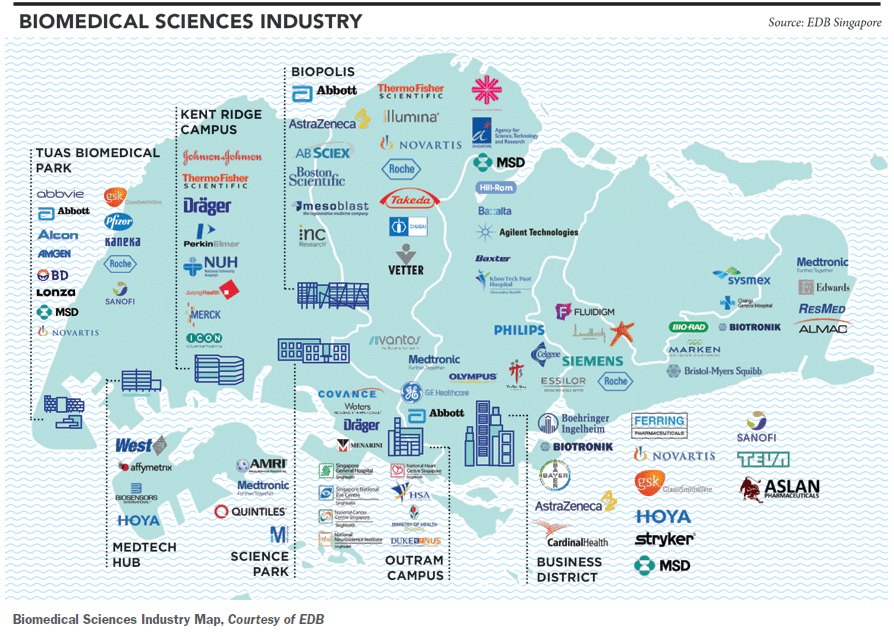
The chairman of the Medical Technology Industry Group (MTIG) Albert Lee holds Singapore's allure in a similarly supportive light: "The country has done a lot in trying to make it attractive for people, driving scientific collaboration among public and private parties, which has clearly not only appealed to SMEs, but also large MNCs. The joint physical spaces at One North, coupled with supportive policies and infrastructure has created a unique ecosystem where innovation can thrive," he summarizes.

How Ti Hwei, president, SAPI
Novartis has long been one of Singapore's leading pharma investors, both in the manufacturing and R&D spaces. Country president of Singapore and head of group country management Christopher Snook explains that today Novartis has "three manufacturing facilities currently in production... last year, we celebrated the tenth anniversary of our contact lens manufacturing while next year, our tableting facility will reach its tenth anniversary." The group has also further strengthened their manufacturing presence in Singapore with a new "aseptic filling facility as part of the Alcon group... and at the moment, we are building an extraordinary biologics facility in Tuas, which is currently undergoing validation."
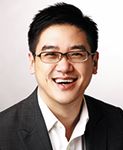
Albert Lee, chairman, MTIG
On the R&D side, Snook explains that back in 2004 "the Novartis Institute for Tropical Diseases (NITD) was established as a public-private partnership between Novartis and Singapore's Economic Development Board (EDB)." Although it was announced in October 2016 that Novartis would be moving the institute out of Singapore, Snook enthuses that "in R&D terms, the work of NITD has proven extraordinary. In 12 years, scientists discovered two new antimalarial compounds that are now in clinical development and have the potential to represent a real paradigm shift in the treatment of malaria. That in itself is impressive by any R&D assessment and we are delighted by the progress we have made there." As such, Snook strongly stresses that the facility's closure does not reflect any negative judgement on Singapore's R&D potential, and rather Novartis wanted to merge the NITD with their Biomedical Research Institute in Emeryville, California.
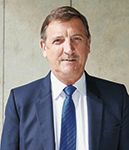
Christopher Snook, country president Singapore & head of group country management, Novartis
With successful R&D investments in Singapore like the NITD to point to, Singapore's attractiveness as an R&D ecosystem has been clearer for more recent investors such as Mundipharma - who recently decided to establish its first-ever consumer health hub in the country. However, the logic behind investments in manufacturing remain relatively ambiguous as many neighboring countries such as Vietnam, Malaysia, and China boast significantly lower-cost operating environments. Nevertheless, Mundipharma's president of emerging markets Raman Singh recognized the value of Singapore's pivot towards high-value manufacturing such as injectables, biologics, and vaccines. "This aligned perfectly with our ambitions to build one of the most advanced manufacturing plants in the world, forgoing labor-intensive processes and employing cutting-edge technologies to give us the ability and flexibility to ship volumes in smaller quantities to anywhere in the world," illustrates Singh.
Calibrating Collaboration
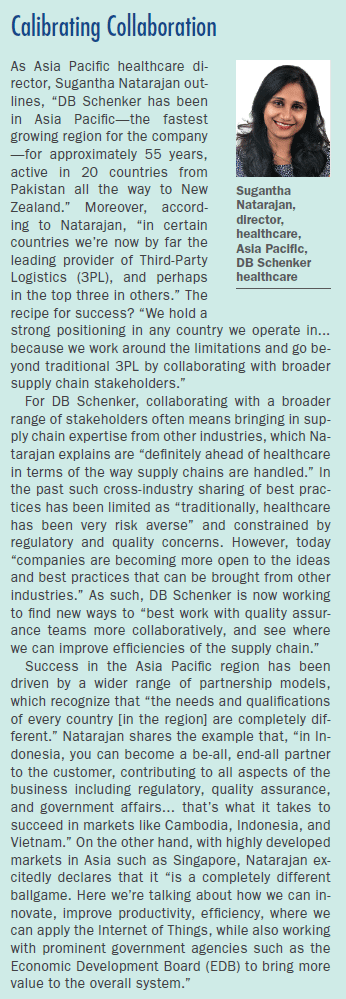
On a similar note, established locally in 2011, Vela Diagnostics, despite a primarily European and American-focused business, maintains Singapore as its global HQ, housing both R&D and manufacturing under one roof. "Singapore is an excellent engineering and microelectronics hub so the technology is of the best caliber here," firmly underscores the company's founder and CEO Michael Tillmann. "At the early stage of the company, it would have been very disruptive to have the manufacturing site away from the research site as it was necessary to transfer the know-how in scalable manufacturing sizes. Especially for a small company, facilitating this tech transfer on a consistent basis is difficult," he admits. "Therefore, we are happy to have our manufacturing hub in Singapore and we are willing to shoulder the slightly higher prices as it is ultimately to the benefit of the total output. The question is not rooted on the cost, but on the strength of the manufacturing talent to bring the level of quality to scale up the costs. Establishing a benchmark base here is essential in order to be able to build a secondary (or even tertiary) manufacturing sites in the years to come," projects Tillmann.

Airside, Aircraft Taking-Off, Courtesy of Changi Airport Group
BD's executive vice president and president of Greater Asia James Lim suggests that BD's investments in Singapore have been correlated with Singapore's investments in human and intellectual capital: "The government has done a phenomenal job in not only attracting top talent from all over the world, but also building up the capabilities and skills of its own population... [and] providing a workforce that complements the whole spectrum from very basic labor to advanced innovation."
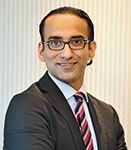
Raman Singh, president of emerging markets, Mundipharma
PHARMACEUTICALS... IN THE SKY!
With the Singaporean government putting immense effort into developing a true pharmaceutical cluster in the country replete with manufacturing and R&D, the city-state has simultaneously emerged as a major logistics hub for the life sciences sector in the region. As Leonora Lim, vice president life sciences and healthcare Asia Pacific for DHL customer solutions & innovation, explains "the Singaporean government has invested a lot to make healthcare and life sciences a strategic sector for the country. As such, Singapore has strong capabilities across the life sciences value chain from clinical research to manufacturing, commercialization, and distribution." It is with this narrative that Lim highlights that "DHL is strongly present in Singapore to support this strategic sector and globally recognized pharmaceutical cluster," and explains that the company has "special processes and facilities, such as our DHL Global Forwarding Life Sciences Competence Centers, in place to cater to the demanding needs of our clients from the life sciences industry. Our Advanced Regional Center (ARC) (a SGD 160 million contract logistics facility run by our sister business division, DHL Supply Chain, which opened in April 2016) is a huge investment in this regard and contains the infrastructure and certifications required by life sciences customers."
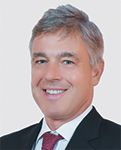
Michael Tillmann, CEO, Vela Diagnostics
With the pharma industry's mentality towards cost and expenditures, which continue to evolve in light of persistent scrutiny of and downward pressure on prices around the world, many companies are doubling down on their regional distribution operations in Singapore to improve efficiency – and DHL is far from the only company working to capture the associated growth. Thomas Page, UPS's vice president of contract logistics and healthcare Asia Pacific explains that when "an additional location is added to the distribution hub, this reflects up to 29 percent more inventory, leading to obsolescence and an enormous investment on the balance sheet under inventory. Companies are looking to pull this inventory back to a regional hub with proximity to market and lower labeling costs for optimal inventory and flexibility. We are seeing this as a trend and one of the added benefits of Singapore as a hub." The logic is much the same for packaging and labelling operations, as "once the product is labeled there is no longer the ability to be geographically flexible with that inventory," and "when the product is labeled in-country, inventory is then sprinkled throughout the region tying up working capital." Running a physical or virtual distribution center in Singapore via a third party logistics provider can allow companies to cover significant sections of Asia Pacific markets with relatively low inventories on hand.

Thomas Page, vice president of contract logistics and healthcare Asia Pacific, UPS
At the heart of the Singapore logistics hub lies Changi International Airport, which was voted the World's Best Airport for the fourth time in a row in 2016 by the passenger oriented Skytrax survey, and also holds a wide range of air cargo focused awards, including the Asia Pacific Airport of the Year from Payload Asia, which it won for the third consecutive year in 2016. Phau Hui Hoon, assistant vice president for cargo and logistics development at Changi Airport Group, explains that, "we have seen pharmaceuticals as a high potential niche for several reasons. Global spending on cold chain pharma shipments is growing at between eight and nine percent per year, and over the next few years Asia will account for one of the largest shares of that global growth. Given our geographic location, connectivity, infrastructure, and capabilities and a whole range of other factors, we feel [Changi Airport is] well located to capture a significant portion of this growth in pharmaceutical airfreight. As such we have made significant efforts to position Changi as an optimal hub for these shipment volumes," and efforts have proved successful as "pharma cargo volumes have grown at a CAGR of 13 percent from 2010 to 2015."
Connecting Data in the Logistics Community
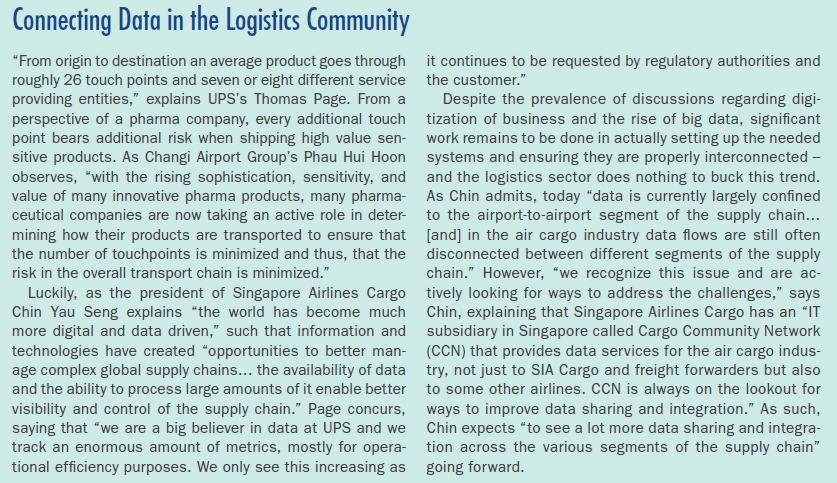
Connecting Data in the Logistics Community
Since "Changi Airport Group itself is not a direct service provider," Phau clarifies that the airport's "role was very much to work with our stakeholders in the airport ecosystem to raise awareness about the potential the pharma industry represented, and some of the necessary investments that would be needed to capture that." The first visible success of this awareness initiative arrived in 2010 when one of the airport's ground handlers, SATS, opened their Coolport facility. "DNATA, our other airport ground handler, followed with their investment in their own cold chain facility in 2013," adds Phau. Beyond infrastructure, Changi Airport Group has also spearheaded the effort to get companies working in the airport ecosystem certified to handle pharma products. In this respect, the group has selected the relatively new IATA-CEIV Pharma certification, and SATS once again was the first mover getting certified in 2014; Phau excitedly shares that "we are expecting six different companies to get their IATA-CEIV Pharma certification in 2017." The next step for the airport has been joining the recently established Pharma.Aero community of IATA-CEIV Pharma certified airports around the world, with the eventual goal of being able to offer end-to-end services guaranteed under the same quality standards. Phau states "Changi Airport is proud to be a strategic member of the international Pharma.Aero community alongside Miami International Airport, Brussels Airport, Sharjah Airport in the UAE, Singapore Airlines Cargo – other members include Brussels Airlines and Brinks Life Sciences."
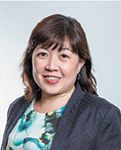
Leonara Lim, vice president, life sciences & healthcare Asia Pacific, DHL Customer Solutions and Innovations
Today Singapore's position as the premier logistics hub for pharmaceuticals in Asia is unassailable. As explained by President of Singapore Airlines Cargo Chin Yau Seng, "pharmaceutical companies need to be able to have easy access to even more locations to ensure that their products reach their ultimate customers without compromising product integrity. That's where direct air links are particularly important... Singapore together with SIA Cargo are in a good position to fulfil those needs as we have a substantial global flight network with extensive coverage of the Asia Pacific region." Altogether, the city-state enjoys direct flights to over 330 cities, including 32 in China, 15 in India, and at least 13 in Indonesia – a level of connectivity unparalleled by other airports in the region according to Phau.
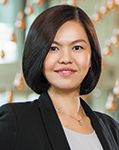
Phau Hui Hoon, assistant vice president for cargo and logistics development, Changi Airport Group
MANAGING DIVERSITY
With stagnating growth rates in Western economies and their increasingly stringent pressures on controller healthcare costs, Asia Pacific has often been viewed as the next frontier for unlocking much sought-after growth. "APAC is estimated at 25 percent of the global economy and within 10 years it is expected to grow to 35 percent," postulates Martin Dewhurst, senior partner, co-convenor of the global pharmaceuticals and medical products practice at McKinsey & Company. He further outlines that "there are two billion people in just this region and the developing countries are projected to grow between 6 - 10 percent compared to 1 - 2 percent growth in the United States." "That being said," continues Dewhurst, "the region is entering a second époque that will throw up new challenges for the pharma and life sciences industries. If the first era was defined by great excitement and optimism, the second will be all about responding to unfolding scenarios and keeping alive the ambitions."
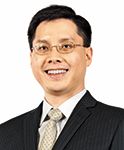
Chin Yau Seng, president, Singapore Airlines Cargo
Indeed, while the tantalizing appeal of lucrative, untapped Asian markets still exerts a strong grip on investors, the degree of diversity in terms of demographics, disease profiles, healthcare systems, and regulatory regimes present big challenges according to Fredrik Nyberg, CEO of APACMed - a non-profit trade association established in 2014 to unify the voice of Asia's medical device industry. "10 or 15 years ago, the focus was almost exclusively on Japan and China. Today, the region as a whole contributes to 15-20 percent of global sales for many of our members, and markets such as India, Indonesia and Vietnam are getting much greater attention," details Nyberg.
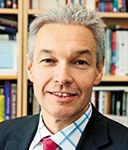
Martin Dewhurst, senior partner, co-convenor of the global pharmaceuticals and medical products practice, McKinsey & Company
Moreover, today the innovative potential of many countries in Asia is of increasing interest to foreign service providers – no longer can one view many of these economies as large, population driven consumer markets. Alan Ong, executive vice president Asia Pacific and global head of medical devices and diagnostics at INC Research enthuses "like most CROs, we see the enormous potential of Asia due to the population size and the growing developments within the region... A number of years ago the attraction to Asia Pacific was access to this large population at a lower pricing point, with Japan as an exception... Now we are starting to see an increasing number of biotech companies from Korea, China, and Taiwan, and they are developing their pipelines. We did not see this just five years ago..." The growth potential such opportunities present is substantial, and Ong attests "this region's contribution to the overall revenue of INC Research is only increasing and we expect this to continue and grow. We are experiencing double-digit growth, with still more potential for further growth."

Fredrik Nyberg, CEO, APACMed
After years of organizational focus on Japan as the advanced market in the region and the behemoth Chinese market, many Western companies have found themselves rather tangled when attempting to access traditionally undervalued markets across emerging Asia. "The inherently dynamic nature of the region has come as a surprise to some people -dwindling growth rates, rapidly rising inflation, and deepening devaluation of major currencies by as much as 40 to 80 percent over the past couple of years has of course been a challenge to navigate through from a business perspective," muses Takeda's president of emerging markets Giles Platford. "Although, these countries are extremely individual in nature, and lack the homogeneity of Europe, the sheer level of diversity and complexities actually introduces certain commonalities that you can leverage in terms of leadership styles and management capabilities," advises Platford.
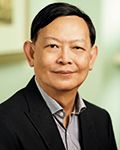
Alan Ong, executive vice president Asia Pacific and global head of medical devices and diagnostics, INC Research
Janssen's company group chairman of Asia Pacific Kris Sterkens believes "succeeding in Asia Pacific entails first coming to terms with the sheer level of diversity that you're dealing with. This region exhibits considerably distinctive dynamics and regulatory frameworks compared to say the convergence of healthcare systems in Europe." "But no matter what market you're in," he argues, "you're starting to see an evolution of how stakeholders choose to engage with pharmaceutical companies. They don't want to only interact with reps anymore, or at least not all the time, often opting instead for alternative channels including digital platforms. However, you still want to accept the fact that culturally there are differences, while identifying the shared commonalities that we as a regional team can capitalize on. We don't have to reinvent the wheel in each market, as there are some strategies we can execute across all or most of the markets. Ultimately, it's both a science and an art - constantly evaluating where exactly you can achieve commonality and where you should embrace diversity."
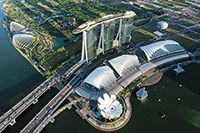
Marina Bay Sands Property Overview Shot, Courtesy of Marina Bay Sands
Zimmer Biomet's senior executive advisor for Asia Pacific Stephen Ooi is confident that the "key is not viewing the market from purely the company's perspective. For example, there are fewer regulators in emerging markets in comparison to the number of regulators in more developed markets to address the huge amount of reviews and approvals. At the same time, regulators in emerging markets also need training. That is why for us as a corporation it is much more beneficial to take the approach where we ask ourselves: how can we make their jobs easier and help them to better understand our technology?"
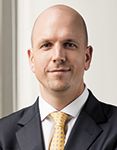
Giles Platford, president emerging markets, Takeda
At times, regional leadership and management may seem an exercise in futility. However, the scope of challenges is such that individual actors, be they government institutions or companies, cannot hope to develop effective solutions in a timely manner. As APACMed's Frederik Nyberg explains, "The megatrends of a rapidly aging population, a growing middle class, and a rising chronic disease burden are all driving demand for quality healthcare. Addressing this growing demand will require a different kind of innovative thinking on the part of all stakeholders. We will need to collaborate differently to solve our common healthcare challenges." Asia might be a diverse patchwork of unique circumstances, but to bring access to healthcare to the vast majority of patients in the region actors will need to find ways to effectively collaborate, coordinate, and support one another across both organizational boundaries and national borders.

Anna Maria Braun, president Asia Pacific, B. Braun
"In essence, the industry has a common overarching goal of driving innovation in the region and ensuring that access is available to a greater number of people over time," pinpoints Anna Maria Braun, president of B. Braun Asia Pacific and vice chairman of APACMed. "I strongly believe that a joint platform which promotes unity and neutrality of interests will foster interaction and generate better results with stakeholders. Moreover, engaging with doctors and nurses associations through organizations like APACMed can help elevate patient safety and actualize the industry's vision to deliver healthcare in the best way possible," stresses Braun.
Singapore has a clear role to play in facilitating and catalyzing such pan-Asian collaboration. After decades of hard work and investment, the country has become an irresistable platform for multinational businesses to manage their regional operations. With the immense challenge of bringing access to healthcare to hundreds of millions of people across the region serving as a massive impetus to create new ways of providing healthcare, many are looking towards the entrepreneurs, scientists, and experienced innovative life science companies based in Singapore to help define the way forward. Ultimately, "Singapore is a fantastic pilot ground for influencing the best medical practices in the region," says BD's executive vice president and president of Greater Asia James Lim. "With its prevalent forward-thinking attitude, the country effectively serves as an experimental basis for pioneering better technologies, processes, and solutions with the patient of the future in mind. Undoubtedly, Singapore will continue innovating higher up the value chain," he optimistically concludes.
